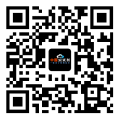详细说明
Species Reactivity
Human
Specificity
Detects human CD40 Ligand/TNFSF5 in direct ELISAs and Western blots. In direct ELISAs and Western blots, no cross-reactivity with recombinant human (rh) CD27 Ligand, rhCD30 Ligand, or recombinant mouse CD40 Ligand is observed.
Source
Monoclonal Mouse IgG 2B Clone # 40804
Purification
Protein A or G purified from hybridoma culture supernatant
Immunogen
E. coli-derived recombinant human CD40 Ligand/TNFSF5
Leu50-Leu261
Accession # P29965Formulation
Lyophilized from a 0.2 μm filtered solution in PBS with Trehalose. *Small pack size (SP) is supplied as a 0.2 µm filtered solution in PBS.
Endotoxin Level
<0.10 EU per 1 μg of the antibody by the LAL method.
Label
Unconjugated
Applications
Recommended
ConcentrationSample
Western Blot
1 µg/mL
Recombinant Human CD40 Ligand/TNFSF5 aa 108-261 (Catalog # )
Flow Cytometry
0.25 µg/10 6 cells
Human peripheral blood mononuclear cells treated with PMA and Ca 2+ ionomycin
Immunohistochemistry
8-25 µg/mL
See below
Blockade of Receptor-ligand Interaction
In a functional ELISA, 0.03-0.1 µg/mL of this antibody will block 50% of the binding of 2 ng/mL of biotinylated Recombinant Human CD40 Ligand to immobilized Recombinant Human CD40/TNFRSF5 Fc Chimera (Catalog # ) coated at 2 µg/mL (100 µL/well). At 1 μg/mL, this antibody will block >90% of the binding.
CyTOF-ready
Ready to be labeled using established conjugation methods. No BSA or other carrier proteins that could interfere with conjugation.
Please Note: Optimal dilutions should be determined by each laboratory for each application. are available in the Technical Information section on our website.
Data Examples
Immunohistochemistry | CD40 Ligand/TNFSF5 in Human Tonsil. CD40 Ligand/TNFSF5 was detected in immersion fixed paraffin-embedded sections of human tonsil using Mouse Anti-Human CD40 Ligand/TNFSF5 Monoclonal Antibody (Catalog # MAB617) at 15 µg/mL overnight at 4 °C. Tissue was stained using the Anti-Mouse HRP-DAB Cell & Tissue Staining Kit (brown; Catalog # ) and counterstained with hematoxylin (blue). Specific staining was localized to lymphocytes. View our protocol for . |
Preparation and Storage
Reconstitution
Reconstitute at 0.5 mg/mL in sterile PBS.
Shipping
The product is shipped at ambient temperature. Upon receipt, store it immediately at the temperature recommended below. *Small pack size (SP) is shipped with polar packs. Upon receipt, store it immediately at -20 to -70 °C
Stability & Storage
Use a manual defrost freezer and avoid repeated freeze-thaw cycles.
12 months from date of receipt, -20 to -70 °C as supplied.
1 month, 2 to 8 °C under sterile conditions after reconstitution.
6 months, -20 to -70 °C under sterile conditions after reconstitution.
Background: CD40 Ligand/TNFSF5
CD40 Ligand (CD40L), now renamed TNFSF5 but also known as CD154, TRAP and gp39, is a 34‑39 kDa type II transmembrane glycoprotein that belongs to the TNF superfamily (1‑3). Human CD40L is 261 amino acids (aa) in length and consists of a 22 aa cytoplasmic domain, a 24 aa transmembrane segment, and a 215 aa extracellular region that consists of multiple beta -strands and one N‑linked glycosylation site (4, 5). Although carbohydrates are present, they are not necessary for activity (6). As with other TNF superfamily members, CD40L will exist as a trimer, both as a membrane bound and soluble form (6‑8). The soluble form is 18 kDa in size and about 150 aa in length, and arises from intracellular proteolytic processing. As a trimer, the soluble form is bioactive (7‑9). Multiple mutations and alternate splice forms of CD40L exist, often associated with pathology and leading to truncated or nontrimerizable forms of CD40L (8). While CD40L is a ligand for CD40, the ligation of CD40L by CD40 initiates bidirectional signaling in both CD40 and CD40L expressing cells (10). The extracellular region of human CD40L is 99%, 88%, 86%, 82%, 75% and 75% aa identical to the extracellular regions of CD40L in rhesus monkey, bovine, porcine, canine, mouse and rat, respectively. CD40L binds to both CD40 and to integrin alpha IIb beta 3 (CD41) (3, 11). In the cell membrane, it also associates with a unique splice variant of CD28 (CD28i) that may facilitate CD40L signal transduction (12). CD40L is expressed by monocytes, NK cells, mast cells, basophils, smooth muscle cells, endothelial cells, dendritic cells, activated and resting B cells, plus activated platelets and CD4+ T cells (13, 14). CD40L ligation of CD40 on dendritic cells (DC) initiates DC maturation and differentiation. CD40L signaling into naïve B cells promotes germinal center formation and isotope switching. With IL-21, CD40L generates IgA plus IgG3; with IL-4, CD40L generates IgG1 secretion (14, 15).
References:
Zhang, G. (2004) Curr. Opin. Struct. Biol. 14:154.
Hehlgans, T. and K. Pfeffer (2005) Immunology 115:1.
Quezada, S.A. et al. (2004) Annu. Rev. Immunol. 22:307.
Graf, D. et al. (1992) Eur. J. Immunol. 22:3191.
Hollenbaugh, D. et al. (1992) EMBO J. 11:4313.
Khandekar, S.S. et al. (2001) Prot. Exp. Purif. 23:301.
Pietravalle, F. et al. (1996) J. Biol. Chem. 271:5965.
Garber, E. et al. (1999) J. Biol. Chem. 274:33545.
Vakkalanka, R.K. et al. (1999) Arthritis Rheum. 42:871.
Eissner, G. et al. (2004) Cytokine Growth Factor Rev. 15:353.
Prasad, K.S. et al. (2003) Proc. Natl. Acad. Sci. USA 100:12367.
Mikolajczak, S.A. et al. (2004) J. Exp. Med. 199:1025.
Lievens, D. et al. (2009) Thromb. Haemost. 102:206.
Elgueta, R. et al. (2009) Immunol. Rev. 229:152.
Avery, D.T. et al. (2008) J. Immunol. 181:1767.
Entrez Gene IDs:
959 (Human); 21947 (Mouse); 84349 (Rat)
Alternate Names:
CD154 antigen; CD154; CD40 antigen ligand; CD40 Ligand; CD40-L; CD40LG; CD40LIGM; gp39; hCD40L; HIGM1; T-B cell-activating molecule; T-BAM; T-cell antigen Gp39; TNF-related activation protein; TNFSF5; TNFSF5IMD3; TRAP; TRAPtumor necrosis factor (ligand) superfamily, member 5 (hyper-IgM syndrome); tumor necrosis factor (ligand) superfamily member 5; Tumor necrosis factor ligand superfamily member 5











 粤公网安备44196802000105号
粤公网安备44196802000105号